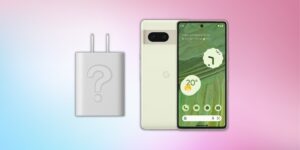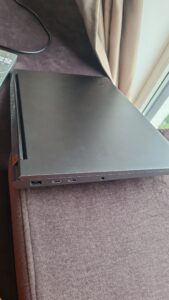Is your charger refusing to cooperate, leaving you frustrated and disconnected? Don’t worry, because I’ve got the solution to your charging woes right here. In this article, I will walk you through the steps on how to make your charger work like a charm. No more searching high and low for answers or struggling with a dead battery – I’ve got your back. So, if you’ve ever wondered how to make my charger work effectively, keep reading and get ready to power up your devices hassle-free. Let’s dive in, shall we?
How to Make My Charger Work: A Comprehensive Guide
Have you ever found yourself in a situation where your charger refuses to work? It can be frustrating, especially when you need to charge your device urgently. But fear not! In this comprehensive guide, we’ll explore various troubleshooting steps and tips to help you make your charger work again. From checking the connections to testing for potential issues, we’ve got you covered. So let’s dive right in and get your charger back in action!
Check the Power Outlet
The first thing to do when your charger isn’t working is to check the power outlet you’re using. Sometimes, the issue lies with the outlet rather than the charger itself. Here’s what you can do:
- Plug another device into the same power outlet to see if it’s working. If not, the outlet might be faulty, and you should try a different one.
- If the outlet is working fine, check if it’s loose. Sometimes, a loose connection can prevent the charger from getting power. Make sure the plug fits securely into the outlet.
- Consider using a different power outlet altogether. It’s possible that the one you’re using doesn’t deliver enough power for your charger.
Inspect the Charger
If the power outlet isn’t the issue, the next step is to inspect your charger. There might be a problem with the cable or the plug itself. Here’s what you can do:
- Check for any visible signs of damage on the cable. Look for frayed wires, bent connectors, or any unusual marks. If you find any, it’s time to replace your charger.
- Examine the plug that connects to your device. Ensure that the pins are straight and undamaged. If they’re bent or broken, it’s best to replace the charger to avoid any potential harm to your device.
- Try using a different charging cable. Sometimes, the issue lies with the cable, not the charger itself. Borrow a cable from a friend or family member and see if it works with your charger. If it does, you’ll need to purchase a new cable.
Clean the Charging Port
Sometimes, the charging port on your device can get dirty or clogged with lint, preventing the charger from making a proper connection. To clean it:
- Turn off your device and gently remove any debris from the charging port. Be careful not to damage the port.
- Use a small, soft brush (like a toothbrush) to gently clean the inside of the port. Brush away any dust or lint that might be blocking the connection.
- Blow into the port to remove any remaining debris. Alternatively, you can use compressed air to clean it thoroughly.
Try a Different Charging Method
If cleaning the charging port didn’t solve the issue, it might be worth trying a different charging method. Here are a few alternatives you can explore:
- Wireless charging: If your device supports wireless charging, consider investing in a wireless charger. This eliminates the need for cables and can be a convenient solution.
- USB charging: If you usually charge your device through a wall outlet, try connecting it to your computer or laptop using a USB cable. This can help determine if the issue lies with the charger or the device itself.
- car charger: If you’re on the go, using a car charger can be a lifesaver. It allows you to charge your device while driving and is particularly useful during long trips.
Consult a Professional
If none of the above methods seem to work, it’s time to seek professional help. Contact the manufacturer of your device or visit a certified service center to get a thorough diagnostic and repair. They have the expertise to identify any underlying issues and provide a suitable solution.
Remember, attempting to repair a charger yourself might void any warranty you have, so it’s best to consult professionals when in doubt.
Preventive Measures to Keep Your Charger Working
While it’s essential to know how to troubleshoot a faulty charger, it’s equally important to take preventive measures to ensure its longevity. Here are some tips to keep your charger working smoothly:
- Avoid bending or straining the cables excessively. Excessive bending can damage the wires inside and lead to a malfunction.
- Invest in a cable organizer to prevent tangling and unnecessary stress on the cables.
- Avoid exposing your charger to extreme temperatures. High heat or cold can affect its performance and even cause damage.
- Handle the charger and its cables with care. Tugging or yanking them forcefully can lead to internal wire damage.
- Regularly clean the charger and cables using a soft cloth to prevent dust buildup.
When your charger refuses to work, it can be frustrating. However, by following the troubleshooting steps outlined in this comprehensive guide, you’re now equipped with the knowledge to resolve the issue. Start by checking the power outlet, inspecting the charger and its cable, and cleaning the charging port. If those measures don’t work, try alternative charging methods or consult a professional. And remember, taking preventive measures can help extend the lifespan of your charger. So go ahead, put these tips into practice, and enjoy a fully functional charger once again!
How To Fix A Phone Charger That Won't Charge-Tutorial
Frequently Asked Questions
How can I make my charger work?
There are several steps you can take to troubleshoot and potentially fix any issues with your charger:
Why is my charger not working?
There could be several reasons why your charger is not working. It could be a problem with the electrical outlet, the charger itself, or the device you’re trying to charge. To determine the cause, try charging a different device with the same charger or using a different charger with your device.
What can I do if my charger is not connecting properly?
If your charger is not connecting properly to your device, first check if there is any debris or dirt in the charging port. Use a small, soft brush or a can of compressed air to clean it gently. If that doesn’t work, try using a different charging cable or adapter to see if the issue lies with the cable or adapter.
Why is my charger cable frayed or damaged?
Charger cables can become frayed or damaged over time due to regular wear and tear. If you notice any visible damage, it is recommended to replace the cable as soon as possible. Continuing to use a frayed or damaged cable can pose a safety risk.
How can I fix a loose connection with my charger?
If you have a loose connection between your charger and the device, try gently wiggling the charger while it’s connected to see if it starts charging. If it does, the issue may be with the charging port on either the device or the charger. Consider using a different cable or adapter to see if that resolves the problem.
What should I do if my charger is still not working after troubleshooting?
If you have gone through the troubleshooting steps and your charger is still not working, it may be time to consider purchasing a new charger. Check with the manufacturer of your device or visit an authorized retailer to ensure you purchase a compatible charger that meets the necessary specifications.
Final Thoughts
To make your charger work effectively, follow these simple steps. First, check if the charger is properly connected to the power outlet and your device. Ensure that all connections are secure and snug. Next, inspect the charging cable for any signs of damage or wear. If needed, replace the cable with a new one. In addition, try using a different power outlet or USB port to rule out any issues with the power source. Finally, consider restarting your device or trying a different charging adapter if the problem persists. By following these steps, you can troubleshoot and resolve any issues with your charger.



